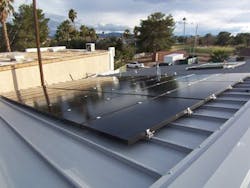Renewable Energy Tax Credits Extended
One feature of the 2016 Omnibus Appropriations Bill, which President Obama signed into law just before Christmas, is a 3-year extension of the 30% investment tax credit for renewable energy systems, including wind and solar, which was set to expire at the end of 2016. According to greentechmedia.com, the energy tax credit will roll back gradually in 2020 and 2021 until it reaches 10% in 2022, where it will remain permanently (see Congress Passes Tax Credits for Solar and Wind: ‘Sausage-Making at Its Most Intense’ by Stephen Lacey).
ConstructionDive.com cites figures from the Solar Energies Industry Association showing that the renewable energy tax credits have spurred the strong growth of solar systems installations, which grew 1,600% since 2008 (see Striving to 'overcome inertia': Solar industry growth faces obstacles among builders, homeowners, by Kim Slowey). Additional sources cited, including Dan Chorost, an environmental attorney, note that the tax credits have kept the cost of solar power, which would otherwise be prohibitive, within reach of homeowners. "'Without the federal incentives, solar just doesn't make as compelling a case (for homeowners)," Chorost said. 'Without them, it's just not as good an economic proposition to switch over.'"
States, municipalities, and utilities often provide additional incentives for renewable energy systems, which further reduce the initial cost. With the extension of the federal subsidy, these other sources are likely to be renewed as well.
